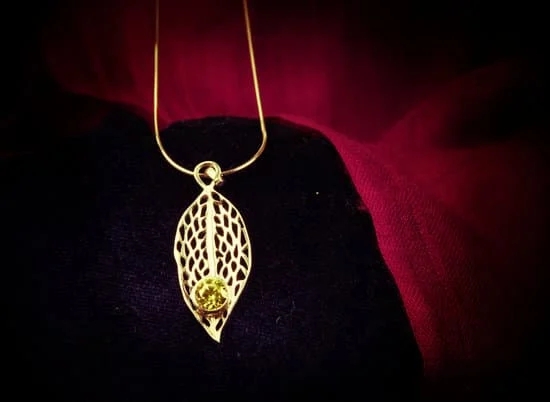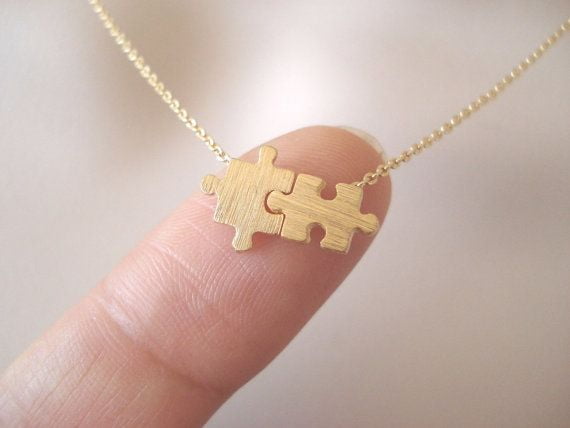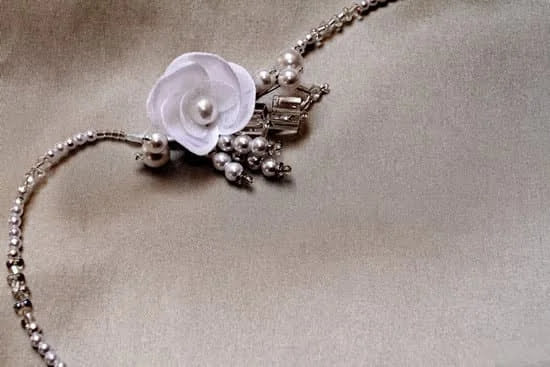Fake gold jewelry may not have the same value as authentic gold pieces, but that doesn’t mean it should be neglected or thrown away when it starts to show signs of wear. In fact, learning how to restore fake gold jewelry can prolong its lifespan and maintain its appearance for years to come.
This introductory section will delve into what exactly fake gold jewelry is, the common materials used in its creation, and why restoration is vital for preserving both the wearability and aesthetic appeal of these pieces.
Fake gold jewelry refers to items that are made to imitate the appearance of real gold but do not contain actual gold or contain only a very thin layer of it. It is often crafted using a variety of materials such as brass, copper, or alloys mixed with cheaper metals like zinc or nickel. While these materials may achieve a similar luster initially, they are more prone to wear and damage over time. That’s where restoration comes in.
Restoration is crucial for fake gold jewelry because these pieces are susceptible to fading color, scratches, tarnishing, and other forms of damage due to normal wear and tear. Additionally, exposure to water, chemicals, and excessive friction can further degrade their quality. By understanding how to properly restore fake gold jewelry, you can not only revive its original shine and allure but also extend its lifespan.
Maintaining and restoring fake gold jewelry is essential for those who cherish their sentimental value or wish to continue wearing them without worrying about their condition. Whether it’s an heirloom piece passed down through generations or a well-loved fashion accessory acquired at an affordable price point, taking care of your fake gold jewelry through restoration ensures that it remains beautiful and wearable for years to come.
So let’s dive into the process of restoration starting with identifying signs of wear and tear in these imitation pieces.
Signs of Wear and Tear
Fake gold jewelry may not have the same intrinsic value as genuine gold, but it still holds sentimental or aesthetic value for many people. However, over time, fake gold jewelry can show signs of wear and tear.
It is important to be able to identify these damages in order to restore the jewelry back to its original beauty. This section will discuss common signs of wear and tear in fake gold jewelry and provide ways to assess the damage before proceeding with the restoration process.
Common Signs of Wear
One of the most noticeable signs of wear in fake gold jewelry is a fading color. The thin layer of gold plating or filling that gives the jewelry its appearance can start to wear off over time, revealing a different base metal underneath. Scratches are also common, especially on frequently worn pieces like rings or bracelets. Additionally, tarnishing may occur due to exposure to moisture or chemicals.
Identifying Damage Causes
It is essential to identify the causes of damage in fake gold jewelry in order to properly address them during the restoration process. Water can cause significant damage by causing rust or corrosion on the underlying metal. Exposure to certain chemicals, such as perfumes or cleaning agents, can react with the base metal and accelerate tarnishing or color changes. Excessive friction from daily wear can result in scratches and surface abrasions.
Assessing Damage
Before starting any restoration work, it is crucial to assess the extent of damage to determine if it can be effectively repaired. Evaluate any discoloration, scratches, or tarnish on your fake gold jewelry by examining it under good lighting conditions. Take note of any areas where plating has completely worn off or there are deep scratches that may require professional assistance for repair.
By understanding and identifying signs of wear and tear in fake gold jewelry, you will be better equipped to proceed with the restoration process more effectively. Assessing the damage will allow you to determine the appropriate techniques and tools needed to restore your fake gold jewelry to its former glory.
Cleaning and Preparing the Jewelry
When embarking on the restoration journey of fake gold jewelry, it is crucial to start with thorough cleaning and proper preparation of the pieces. This step is essential not only in removing dirt, oils, and debris that may have accumulated over time but also in creating a clean surface for subsequent restoration techniques. Here are some essential steps to follow when cleaning and preparing fake gold jewelry for restoration:
- Gentle Cleaning Techniques: Before diving into any cleaning process, it is important to remember that fake gold jewelry is often more delicate than genuine gold. Harsh chemicals or abrasive tools can cause further damage. Instead, opt for gentle cleaning techniques such as using mild soap, warm water, and a soft-bristle brush or cloth to remove dirt and grime from the jewelry.
- Appropriate Cleaning Agents and Tools: Selecting suitable cleaning agents is vital in preventing damage to your fake gold jewelry. Avoid harsh chemical cleaners that can strip off the thin layer of gold coating found in plated or filled jewelry. Opt for mild dish soap or specialized jewelry cleaners specifically formulated for fake gold materials.
- Proper Preparation Methods: Once the initial cleaning has been done, proper preparation methods are essential for more effective restoration results. Start by ensuring that all surfaces of the jewelry are dry before proceeding with any restorative techniques.
Using appropriate tools is equally important. Avoid abrasive materials like steel wool or rough brushes as they can scratch or wear down the fake gold layer. Instead, use soft cloths or brushes made specifically for jewelry cleaning.
Inspect the pieces closely for any stubborn stains or tarnish that may have persisted after cleaning. These areas might require specific treatment options later on in the restoration process.
By following these essential steps in cleaning and preparing your fake gold jewelry, you will create an ideal foundation for successful restoration efforts. Remember to treat your pieces gently throughout this process to avoid causing further damage during restoration. With clean and prepared jewelry, you can now proceed to the next steps in bringing back the shine and beauty of your fake gold pieces.
Restoration Techniques
When it comes to restoring fake gold jewelry, different techniques are required based on the type of jewelry and the extent of damage. In this section, we will explore specific techniques for different types of fake gold jewelry, such as plated, filled, or gold tone. Follow these step-by-step processes for restoring faded or tarnished fake gold jewelry through polishing and buffing, as well as tips for repairing scratches using suitable DIY methods or professional assistance.
1. Polishing and Buffing:
To restore the shine and luster of faded or tarnished fake gold jewelry, polishing and buffing are essential steps. First, clean the jewelry using gentle cleaning techniques mentioned earlier to remove any dirt or debris that may further damage the piece during restoration. Once cleaned, apply a small amount of jewelry polish onto a soft cloth and gently rub the surface in circular motions.
Use moderate pressure but be careful not to overdo it, especially with plated or filled jewelry that has a thin layer of gold. After polishing, buff the jewelry with a clean cloth to bring out its shine.
2. Repairing Scratches:
Scratches can be quite common on fake gold jewelry due to wear and tear. Depending on the severity of the scratches, you can attempt DIY methods or seek professional assistance for repair. For minor scratches on plated or filled jewelry, try mixing baking soda with water until it forms a paste-like consistency.
Apply the paste onto the scratched area and gently rub it in circular motions using a soft cloth. Rinse off with warm water and dry thoroughly before assessing if further repair is needed. Alternatively, if you prefer professional assistance for scratch repair on delicate pieces or valuable items, consult with reputable jewelers who are experienced in handling fake gold jewelry restoration.
3. Special Considerations for Gold Tone Jewelry:
Gold tone jewelry refers to pieces that resemble gold but do not contain any actual gold content like plating or filling. Restoration techniques for gold tone jewelry are slightly different. To restore the color and shine of gold tone jewelry, use a non-abrasive liquid metal cleaner specially formulated for costume jewelry.
Apply the cleaner onto a soft cloth and gently polish the piece in circular motions. Be cautious not to apply excessive pressure or scrub aggressively, as it may remove the gold-like color from the jewelry. After cleaning, buff with a clean cloth to bring out its best appearance.
Remember, proper restoration techniques are crucial when handling fake gold jewelry to avoid further damage or removal of the gold layer. If in doubt or if you have valuable sentimental pieces, it is always recommended to consult professionals who specialize in fake gold jewelry restoration.
| Technique | Description |
|---|---|
| Polishing and Buffing | Apply jewelry polish on a soft cloth and gently rub in circular motions to restore shine. |
| Repairing Scratches | Mix baking soda with water to form a paste and gently rub onto scratched areas using a soft cloth. |
| Special Considerations for Gold Tone Jewelry | Use non-abrasive liquid metal cleaner for costume jewelry, applying gently in circular motions. |
Tarnish Removal
One of the most common issues with fake gold jewelry is tarnishing. Tarnish occurs when the outer layer of metal oxidizes, causing a dull and discolored appearance. Fortunately, there are several effective methods for removing tarnish and restoring the shine to your fake gold jewelry.
Tarnish Removing Solutions
There are many commercial tarnish removing solutions available on the market that can effectively remove tarnish from fake gold jewelry. These solutions typically come in liquid or paste form and contain chemicals that break down the tarnish without damaging the underlying metal. When using a tarnish removing solution, it is important to follow the instructions carefully and use gloves to protect your skin.
To use a liquid tarnish remover, simply soak your fake gold jewelry in the solution for a few minutes, then use a soft brush or cloth to gently scrub away any remaining tarnish. Rinse the jewelry thoroughly with water and dry it completely before wearing or storing it.
If you prefer a paste remover, apply a small amount of the paste onto a soft cloth or sponge and gently rub it onto the tarnished areas of your fake gold jewelry in circular motions. Once again, rinse thoroughly with water and dry completely before using or storing.
Homemade Remedies
Alternatively, there are also homemade remedies that can be used to remove tarnish from fake gold jewelry. One popular method involves creating a paste using baking soda and water. Simply mix equal parts baking soda and water until it forms a thick paste-like consistency. Apply this paste onto your tarnished jewelry using a soft cloth or sponge, then gently buff away the tarnish in circular motions. Rinse with water and dry thoroughly.
Another homemade remedy involves using white vinegar and salt. In a small bowl, combine equal parts white vinegar and salt to create a cleaning solution. Soak your fake gold jewelry in this solution for a few hours, then remove and gently scrub away the tarnish using a soft brush or cloth. Rinse with water and dry completely before wearing or storing.
Maintaining the Shine
Once you have successfully removed tarnish from your fake gold jewelry, it is important to take steps to prevent it from tarnishing again in the future. One way to do this is by applying a thin layer of clear nail polish onto the surface of the jewelry. This creates a barrier between the metal and oxygen, helping to slow down the oxidation process.
Regular cleaning and maintenance also play a crucial role in preserving the shine of your restored fake gold jewelry. After each wear, gently wipe your jewelry with a soft cloth to remove any oils or residues that may cause tarnishing over time. Additionally, store your jewelry in a clean and dry environment, away from direct sunlight and moisture.
By following these tarnish removal methods and maintaining proper care, you can enjoy the renewed shine of your fake gold jewelry for years to come. Remember to always assess the damage before proceeding with restoration techniques and consider seeking professional assistance for high-value or sentimental pieces.
Replenishing the Gold Layer
Fake gold jewelry often loses its shine over time, leading to a dull and lackluster appearance. Replenishing the gold layer is a crucial step in the restoration process to enhance the beauty of fake gold jewelry. This section will explain the concept of gold plating or gold filling and suggest reliable methods for reapplying the gold layers to fake gold jewelry.
Gold plating or gold filling involves adding a thin layer of real gold onto the surface of fake gold jewelry. This process not only restores the lost shine but also improves the durability and longevity of the piece. It is important to note that not all fake gold jewelry can be successfully plated or filled with real gold.
The base material and construction of the jewelry are determining factors. Plated fake gold jewelry usually has a thin layer of real gold applied through an electroplating process, while filled fake gold jewelry contains high-quality metal alloys coated with a thicker layer of real gold.
To replenish the gold layer on fake gold jewelry, there are several methods you can consider.
- Professional Gold Plating or Filling Services: The most reliable way to restore the authenticity and appearance of your fake gold jewelry is by consulting professional jewelers who specialize in plating or filling techniques. These experts have access to high-quality materials and advanced equipment, ensuring a seamless restoration process.
- Gold Plating Kits: If you prefer a DIY approach, you can purchase gold plating kits specifically designed for home use. These kits typically include everything you need to plate your own jewelry, including an electric current source, chemicals, and detailed instructions.
- Gold Leaf Application: Another option for replenishing the gold layer is using ultra-thin sheets of genuine 24-karat gold leaf to cover the surface of your jewelry piece. This method requires precision and patience but can produce stunning results when done correctly.
Regardless of the method you choose, it is important to follow the instructions carefully and exercise caution to prevent any damage to your jewelry. Replenishing the gold layer can greatly enhance the appearance of fake gold jewelry, allowing you to enjoy its renewed beauty for years to come.
Regular Maintenance
After going through the restoration process and bringing back the shine and beauty of your fake gold jewelry, it is essential to establish a regular maintenance routine to preserve its restored appearance. Regular maintenance will help prevent future damage or tarnish, ensuring that your jewelry continues to look its best for a long time. In this section, we will discuss the significance of consistent cleaning and maintenance routines, tips for appropriate storage, and periodic professional inspections.
Cleaning your fake gold jewelry regularly is crucial in preventing dirt, oils, and debris from accumulating and dulling its shine. Use gentle cleaning techniques such as soaking the jewelry in warm water with mild soap and using a soft bristle toothbrush to clean hard-to-reach areas. Avoid using harsh chemicals or abrasive materials that could damage the surface of the jewelry.
Proper storage is another vital aspect of maintaining your restored fake gold jewelry. Keep it in a clean and dry place, away from moisture or extreme temperatures that could cause tarnishing. Store each piece separately in soft cloth pouches or boxes to minimize scratching or tangling with other pieces. Additionally, avoid exposing the jewelry to excessive sunlight or direct heat as it can fade any plating or filling that has been applied during the restoration process.
Periodic professional inspections are recommended for more delicate or intricate pieces of fake gold jewelry. Professional jewelers have expertise in identifying any potential issues such as loose stones or weakened clasps that may require repair before they become more serious problems. These inspections can help ensure that your jewelry remains in good condition and allows you to address any concerns promptly.
To summarize, preserving restored fake gold jewelry requires regular maintenance practices including gentle cleaning techniques, appropriate storage methods, and periodic professional inspections. By incorporating these practices into your routine, you can extend the longevity of your jewelry’s restored appearance and continue enjoying its renewed beauty for years to come.
| Section Title | Regular Maintenance: Preserving Restored Fake Gold Jewelry |
|---|---|
| Subtopics | – Significance of consistent cleaning and maintenance routines
|
| Main Points | – Clean jewelry regularly with gentle techniques and avoid harsh chemicals
|
Importance of Authenticity
The authenticity of gold jewelry is a crucial aspect to consider when making a purchase. Fake gold jewelry has become more prevalent in the market, making it essential for consumers to be able to identify and avoid fraudulent pieces. This section will provide insights on how to differentiate between authentic gold jewelry and its fake counterparts, emphasizing the significance of purchasing from reputable sources.
When it comes to assessing the authenticity of gold jewelry, there are several key factors to consider. One important aspect is the hallmark or stamp that indicates the purity of the gold. Authentic gold jewelry will have a stamp indicating its karat value, such as 10k, 14k, 18k, or 24k. Additionally, reputable manufacturers often include their branding or logo on the jewelry piece.
Weight is another characteristic that can help determine the authenticity of gold jewelry. Genuine gold is dense and heavy compared to other metals. If a piece feels unusually light for its size, it may indicate that it is not made entirely of gold.
Another sign to look out for is discoloration or fading over time. Authentic gold does not tarnish or change color even with prolonged wear. If a piece shows signs of discoloration or starts losing its golden hue, it could be an indicator that it is not genuine.
To ensure that you are purchasing authentic gold jewelry, it is advisable to buy from reputable sources. Established jewelers and retailers with a long-standing reputation are more likely to sell genuine products. Researching customer reviews and seeking recommendations from trusted sources can also help in identifying reliable sellers.
Being aware of these signs and understanding how to identify authentic gold jewelry can protect consumers from falling victim to fraudulent purchases. By prioritizing authenticity, individuals can confidently invest in genuine pieces that hold their value and offer lasting beauty for years to come.
Conclusion
In conclusion, understanding how to restore fake gold jewelry is crucial for both its beauty and longevity. Fake gold jewelry may not have the same value as authentic gold, but it can still hold sentimental meaning and deserve proper care.
By identifying signs of wear and tear, cleaning and preparing the jewelry correctly, utilizing restoration techniques, removing tarnish, replenishing the gold layer, and regularly maintaining the pieces, one can bring back their faux gold jewelry’s shine and maintain it for years to come.
It is important to embrace the process of restoring fake gold jewelry as a way to protect its wearability and appearance. By engaging in regular maintenance routines such as cleaning and storing properly, owners can ensure that their beloved pieces will continue to shine brightly. Regular inspections by professionals are especially recommended for more delicate or intricate pieces that may require additional care.
Lastly, when purchasing new jewelry or assessing existing pieces, it is vital to be aware of authenticity. Understanding how to identify authentic gold jewelry and avoiding fraudulent sources can help prevent acquiring fake gold jewelry in the first place. Being aware of reputable sources and consumer tips will allow individuals to make informed decisions when making purchases or adding new pieces to their collection.
In summary, by taking the time to understand fake gold jewelry’s restoration process and implementing appropriate techniques, individuals can enjoy renewed beauty in their beloved pieces. Embracing these methods allows for sustained wearability, preserves sentimental value, and ensures that fake gold jewelry remains a cherished part of one’s personal style. So why wait? Start restoring your fake gold jewelry today and revel in its longevity and magnificence once again.
Frequently Asked Questions
How do you fix tarnished fake gold jewelry?
Tarnished fake gold jewelry can be restored using a few simple steps. First, gently clean the jewelry using a mild soap and warm water solution. Use a soft cloth or brush to remove any dirt or grime. Avoid using harsh chemicals or abrasive materials, as these can damage the jewelry further.
If the tarnish persists, try using a non-abrasive jewelry cleaner specifically designed for cleaning gold-plated items. Gently rub the cleaner onto the jewelry using a soft cloth and rinse it thoroughly with clean water. Finally, dry the jewelry completely before storing it.
How do you make fake gold look good again?
To make fake gold look good again, it’s important to approach the cleaning process with care and avoid damaging the delicate plating. Start by removing any dirt or debris from the surface of the jewelry using a soft cloth or brush. Then create a cleaning solution by mixing warm water with a mild dish soap.
Dip a soft cloth into this solution and gently wipe away any tarnish or discoloration from the gold-plated surface. Rinse off the soap residue with clean water and pat dry using a soft cloth. Avoid exposing fake gold jewelry to moisture for extended periods as it can cause additional tarnishing.
Is there a way to restore gold plated jewelry?
While it is possible to restore gold-plated jewelry to some extent, keep in mind that most gold plating eventually wears off over time due to regular wear and tear. Before attempting any restoration methods, inspect your piece for peeling or flaking of its plating layer since extensive damage may be more difficult to fix without professional help.
For minor restoration, start by gently polishing the surface with a soft, lint-free cloth to remove any dirt or dullness on the plated layer. If this doesn’t restore its original shine, consider seeking professional help for re-plating or re-dipping the jewelry to achieve an optimal result in restoring its appearance closer to when it was originally purchased.

Welcome to my jewelry blog! My name is Sarah and I am the owner of this blog.
I love making jewelry and sharing my creations with others.
So whether you’re someone who loves wearing jewelry yourself or simply enjoys learning about it, be sure to check out my blog for insightful posts on everything related to this exciting topic!





